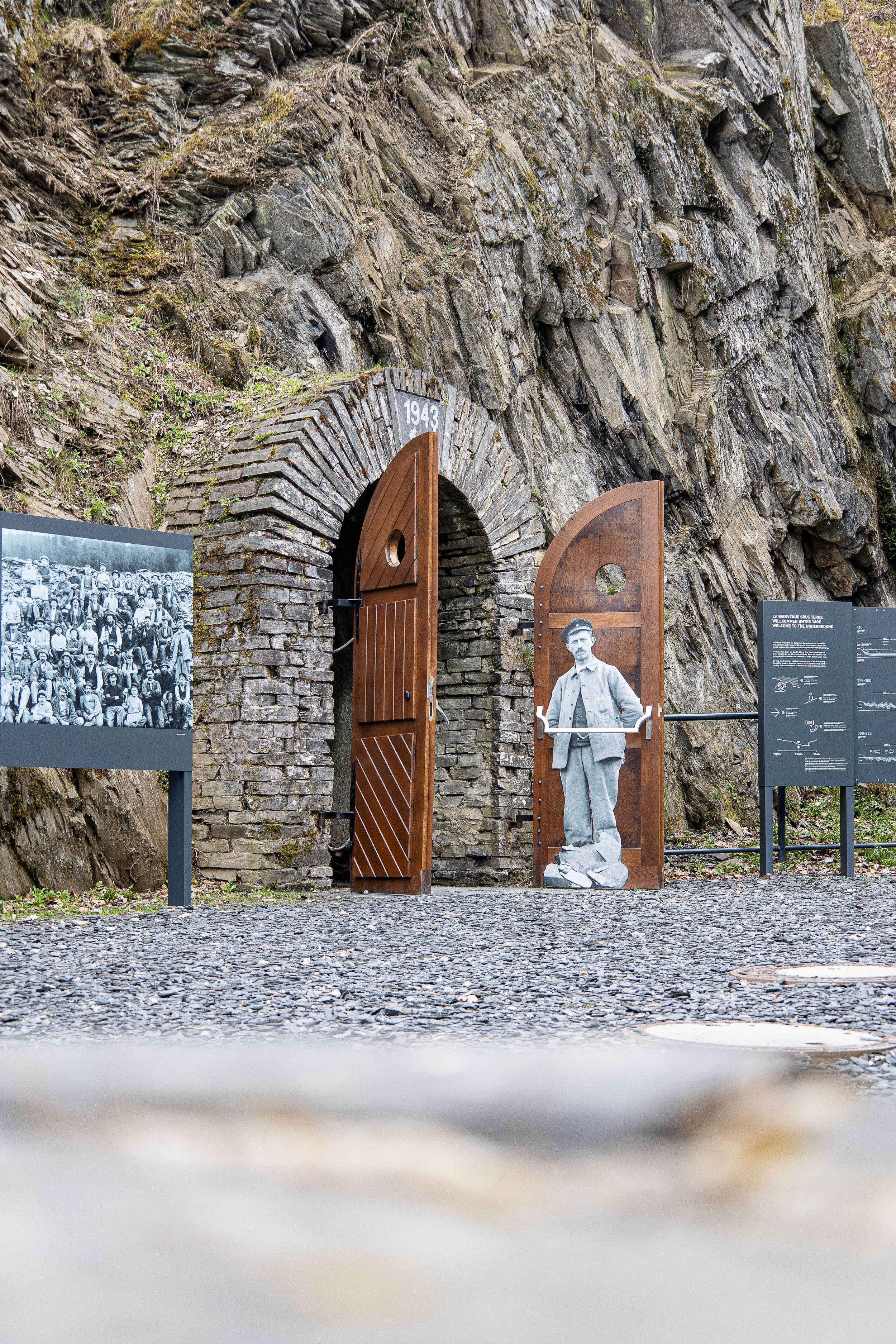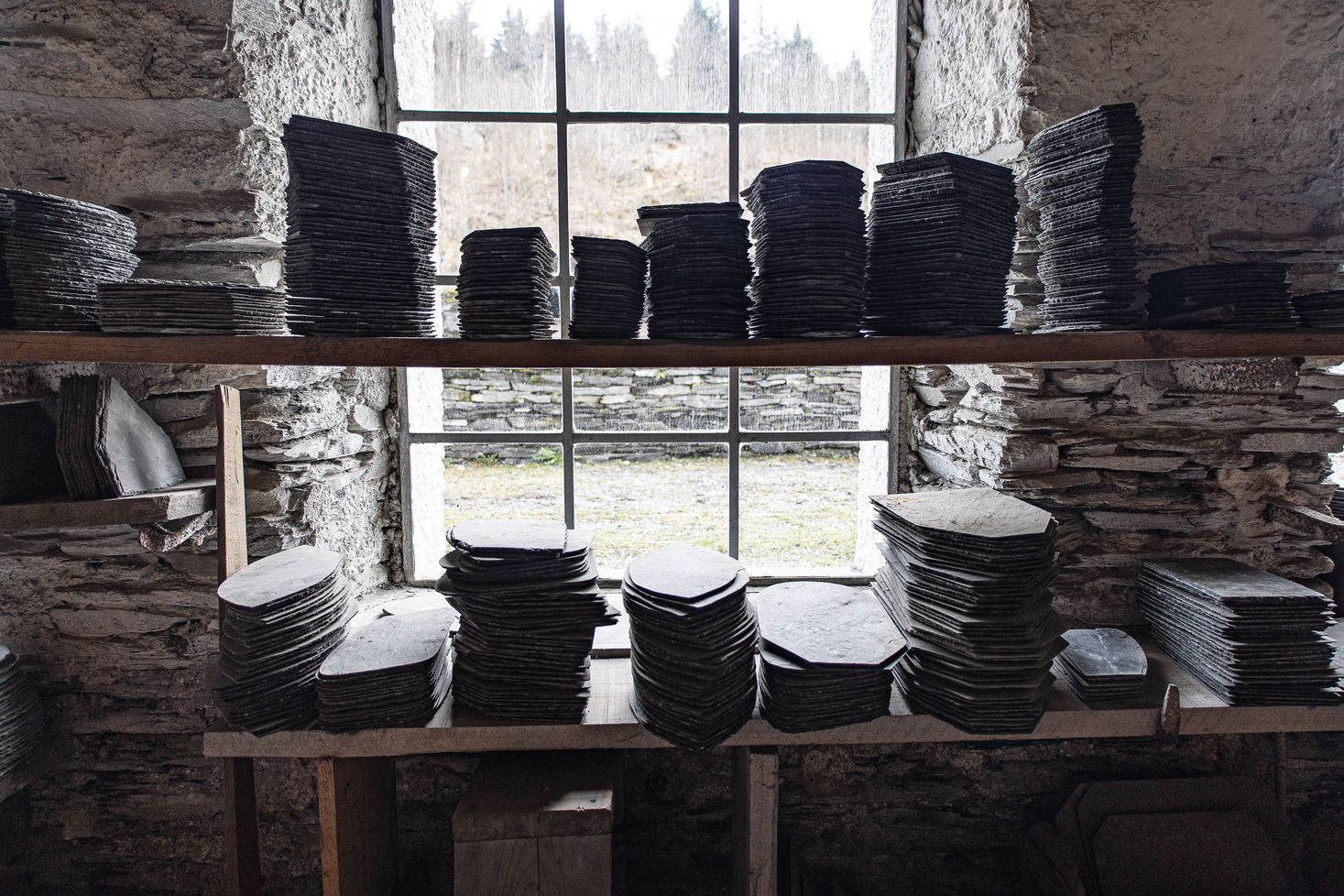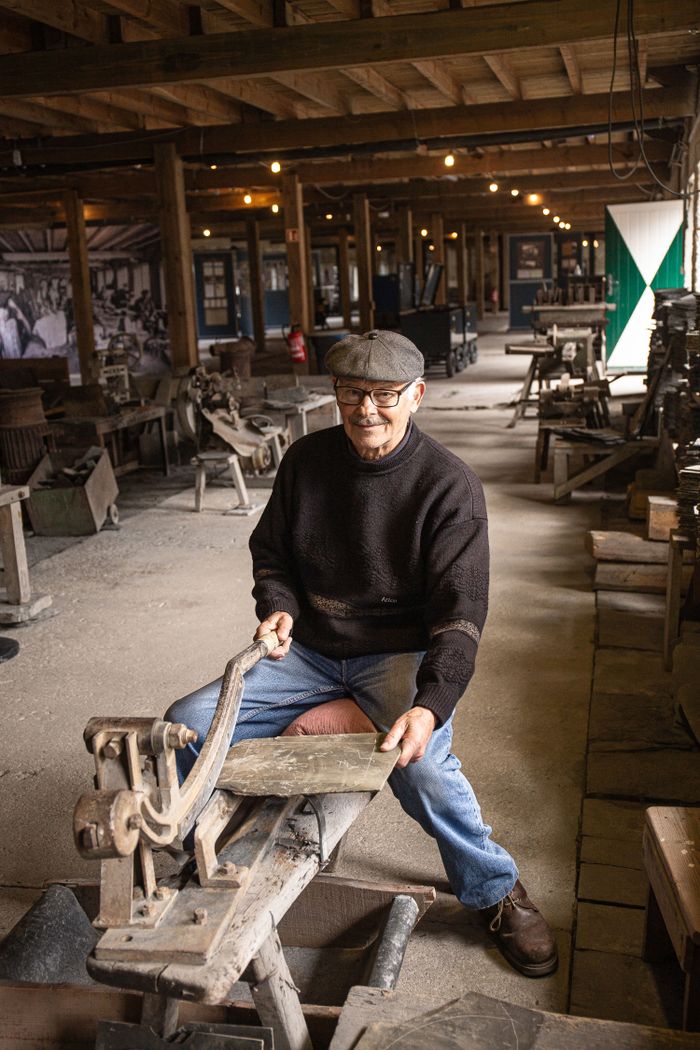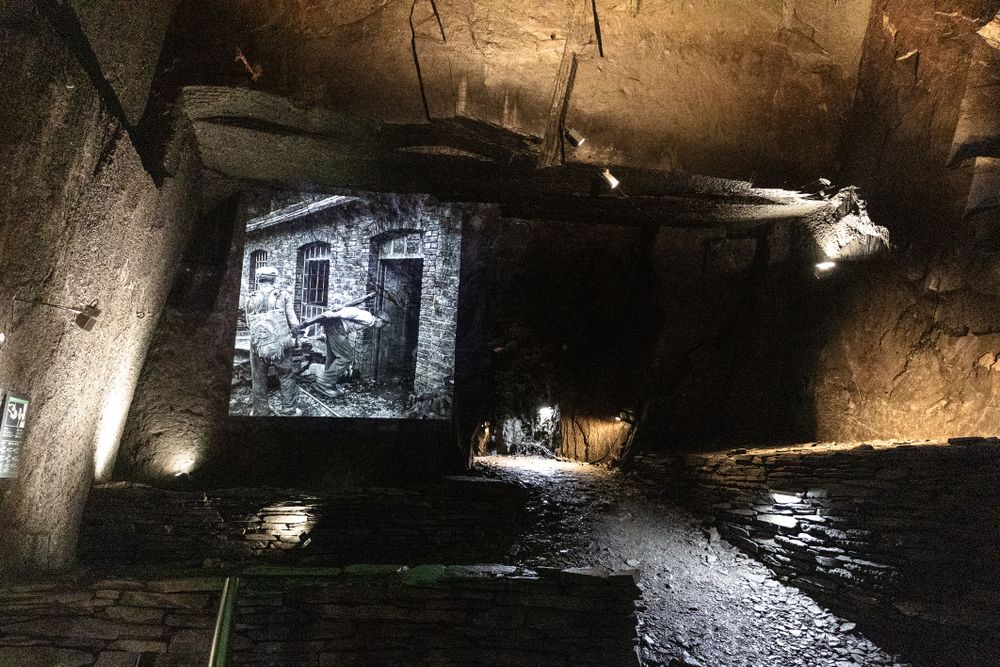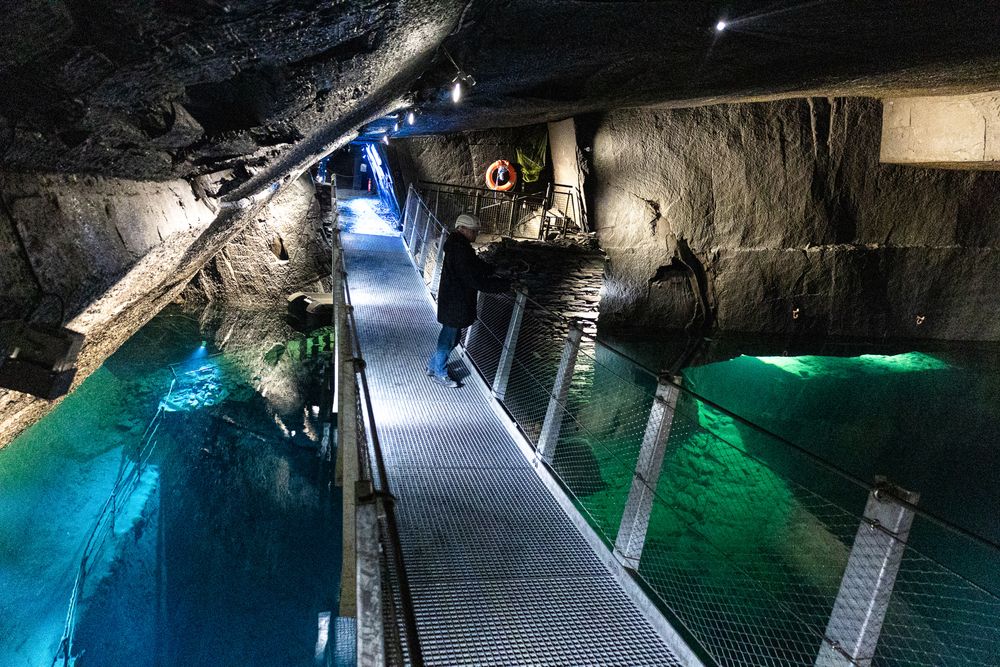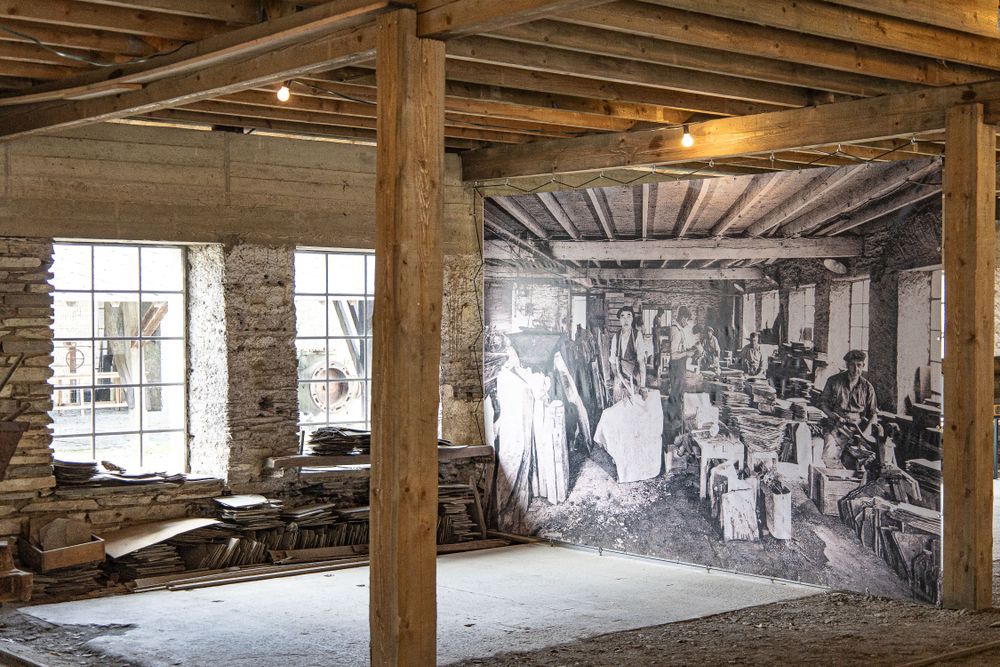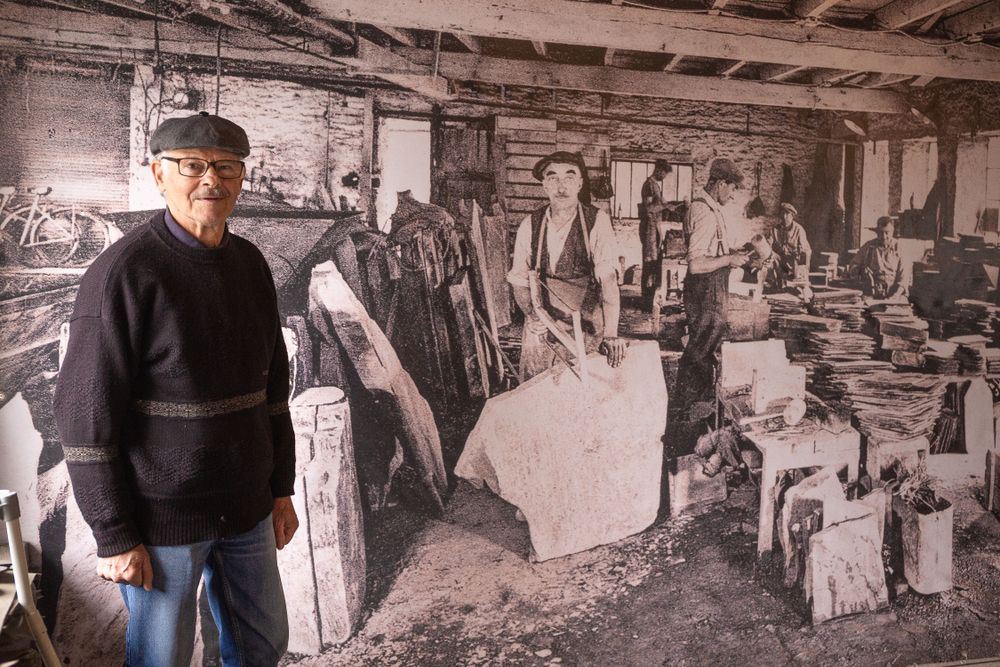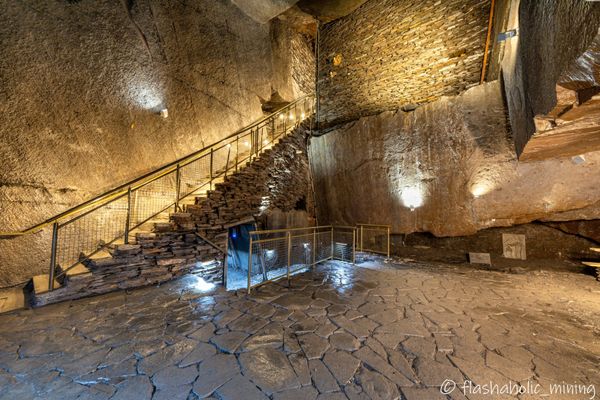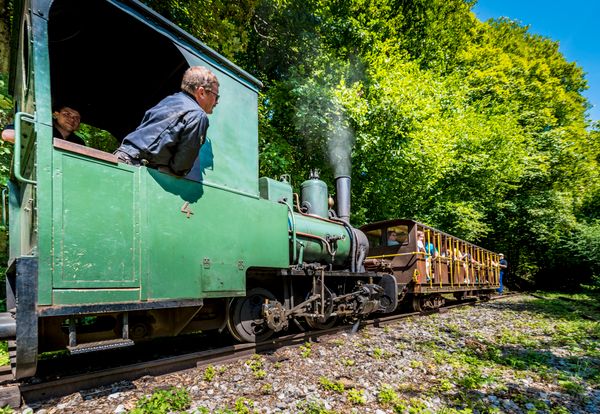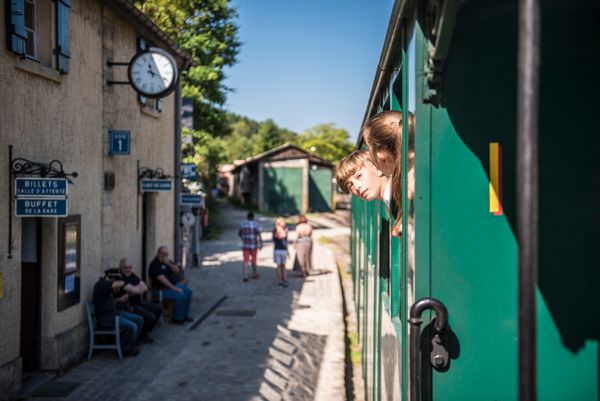René’s stories bring the museum to life. He tells of the difficult working conditions he and his co-workers faced, the camaraderie and the small pleasures they found amidst the hard work. This isn’t just about the history of slate. It’s about the stories of people who dedicated their lives to this hard but rewarding job.
With a hint of melancholy, René leads us to the back corner of the museum where light falls through an old window. “Here,” he says pointing at a bench. “This was my first spot.”
He leans against the wall, his fingers gently grazing the familiar surface. “I was a kid, 14 years old, when I started. It was hard. Really hard. The hours were long and slate-splitting requires precision and concentration.”
With an almost youthful smile, René show us an old slate-splitting tool. He sits down and carefully lifts a raw stone. “I wonder if I can still do it,” he says playfully.
The room goes quiet as we all watch him place the rock onto the device and begin. Utter silence. Then, the scratching noise of the machine. René’s movements reveal the familiarity and precision of an experienced craftsman. There are many small movements. Krrk, krrk, krrk. And voilà: a perfectly split slab of slate appears on his palm.
After our meeting with René, another guide leads visitors into the depths of the slate mine. Equipped with helmets we begin the descent. The air is cooler and soon we hear the rhythmic drops of water forming dark pools on the rugged ground. Small puddles on the stairs, huge lakes at the bottom of this ramified cave. The humidity is intense and makes our skin feel cold and clammy.
The history of slate mining is brought to life in impressive ways in these mining tunnels. Light and video installations illuminate the galleries and create vivid shadows dancing on the walls. They highlight the raw beauty of slate and, quite literally, shine a new light on the work that was done here.
